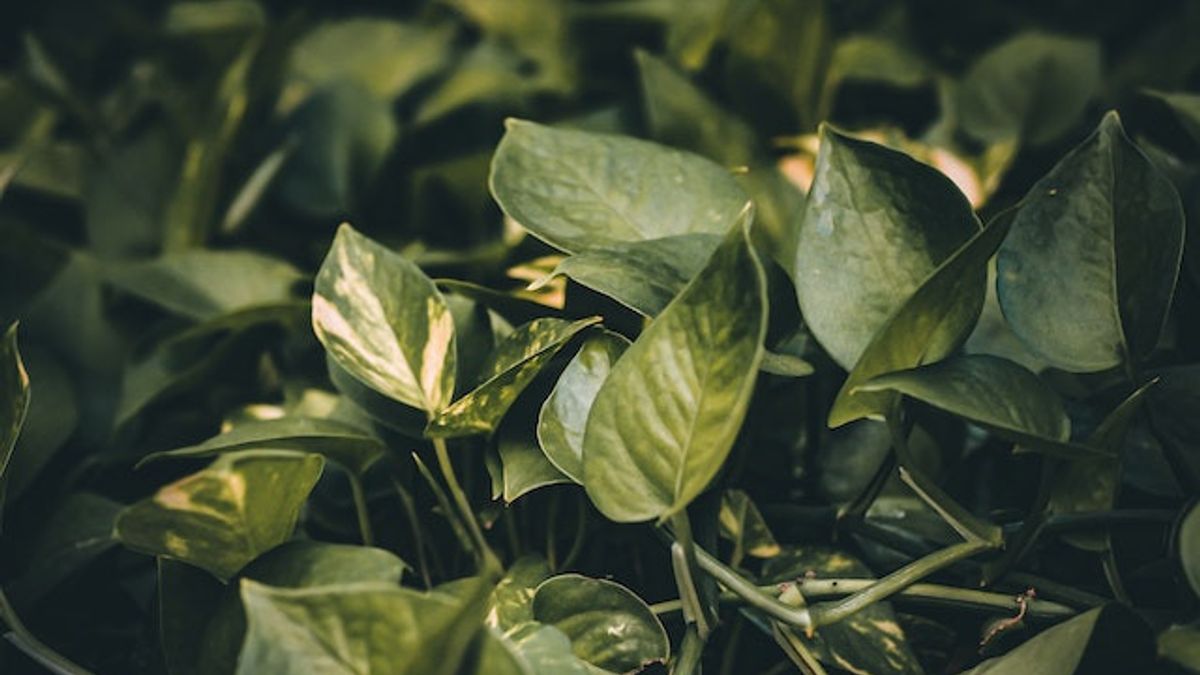JAKARTA - The varieties of pothos and philodendron are the most popular ornamental plants today, but the two are often misunderstood. Although these two plants look similar and have many similarities, they both have different characteristics and needs.
Launching The Spruce, Monday, August 22, there are several main things that can be used to distinguish between pothos and philodendrons. These include taxonomy, leaf shape and texture, aerial roots and petioles, growth habits and new leaves, and growing conditions.
From a taxonomic point of view, pothos and philodendron are two plants belonging to different genera. Pothos belongs to the genus Epipremnum, and philodendron belongs to the genus Philodendron. However, they belong to one family because pothos and philodendron are Aroid (Araceae) plant families.

In addition to taxonomy, an easy way to distinguish pothos and philodendrons is from the leaves. Many philodendrons, including the heartleaf philodendron, have heart-shaped leaves that are thinner and softer in texture. While pothos has leaves that are thicker and more waxy.
This leaf discrepancy is especially noticeable in the area where the petiole connects to the leaf base. For example, philodendron heartleaf and pothos. If the base of the pothos leaf is relatively straight, the base of the philodendron leaf curves inward and is shaped like the top of a heart.
Differences can also be seen between aerial roots and petioles. Both pothos and philodendron have aggressive aerial roots that allow them to propagate around the surface. However, pothos have only one large aerial root per node, whereas philodendrons have several smaller aerial roots per node, and tend to look wilder.
Another way to tell the difference between a pothos and a philodendron is to look for the presence of cataphiles or leaf scales. In philodendron, new leaves will grow through cataphiles. The cataphiles will dry out and fall off after the new leaves open. While in pothos, new leaves will grow stretching from the previous leaf.
Pothos and philodendron have very similar needs in terms of light, soil, water, temperature, and both are considered ornamental plants with minimal maintenance. However, there are some small differences that are useful to know.
Although both are equally resistant to low light conditions, philodendrons tolerate low light more easily than pothos. In addition, pothos prefer hotter temperatures than philodendrons.
Both pothos and philodendrons can be propagated by cuttings, but philodendrons can also produce shoots that can be used for reproduction. In addition, pothos are more drought tolerant than philodendrons.
There are many types of pothos and trailing philodendrons that look similar to each other. The general guidelines outlined here will help you easily identify the trailing pothos or philodendron species.
The English, Chinese, Japanese, Arabic, and French versions are automatically generated by the AI. So there may still be inaccuracies in translating, please always see Indonesian as our main language. (system supported by DigitalSiber.id)













